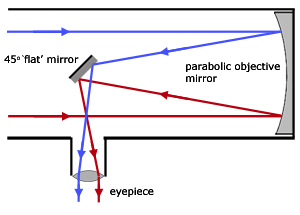Case 1: the object is located beyond the 2F (distance equal to twice the focal length) point
Case 2: the object is located at the 2F point
Case 3: the object is located between the 2F point and the focal point (F)
Case 4: the object is located at the focal point (F)
Case 5: the object is located in front of the focal point (F)
And the results are:
Result 1: the image will always be located somewhere in between the 2F point and the focal point (F) on the other side of the lens. The image will be real and inverted.
Result 2: the image will also be located at the 2F point on the other side of the lens. The image will be real and inverted.
Result 3: the image will be located beyond the 2F point on the other side of the lens.The image will be real and inverted.
Result 4: For the case of the object located at the focal point (F), the light rays neither converge nor diverge after refracting through the lens.
Result 5: the image will always be located somewhere on the same side of the lens as the object. The image will be virtual and erect.
The lenses are also used for focusing on minute near objects by use of microscopes and at far away stars, galaxies, etc by use of the telescope.

The spectacles we wear work on this principle. Far-sightedness, also known as long-sightedness and hyperopia, is a condition of the eye in which light is focused behind, instead of on, the retina. This causes close objects to be blurry, while far objects may appear normal. The lenses used for this condition are convex lenses which increases the power of convergence of the crystalline eye lens. The condition also occurs if the eyeball is too small. Near-sightedness, also known as short-sightedness and myopia, is a condition of the eye where light focuses in front of, instead of on, the retina. This causes distant objects to be blurry while close objects appear normal. this condition also occurs if the eyeball is lengthened. For this condition, concave lenses are used so that light reaching the eye lens diverges a little and then the eye lens converges it so that it falls on the retina. Presbyopia is a condition associated with aging of the eye that results in progressively worsening ability to focus clearly on close objects. This is because of hardening of the eye lens which does not remain flexible enough to get thinner and focus it on the retina. Lenses used in spectacles vary according to how much the light it converges or diverges. The formula for magnification is:
D(1) / D(0) = f / [f - D(0)] = m
Where, D(1)= Distance of image from optical centre of lens
D(0)= Distance of object from optical centre of lens
m= Magnification power
and f = Focal length of lens
By a simple trick with his/her glasses you can quickly tell whether a person is near-sighted or farsighted. A nearsighted person must wear diverging lenses, so print looks smaller if those lenses are held a few inches above the printed page. A farsighted person must wear converging lenses, and those will make the print appear larger.
While using lenses for the telescopes, the lens should be big so as to collect more light and its focal length should be small. But if the lens becomes thick the colours in white light will seperate (since different colours refract to different amounts. This cannot be observed in a glass slab since all the normals are parallel and the seperation of colours due to refraction is reversed when light leaves the glass slab) and form a colourful halo of light around celestial objects. This is called chromatic aberration. Also, the bigger the lens gets the harder it is to make it and use it in the telescope. For this, Sir Isaac Newton introduced a new type pf telescope, reflecting telescope. The refracting telescope used earlier would have two lenses whereas the one proposed by Sir Isaac Newton had a mirror. Moreover, the effort used to make a giant mirror for collecting light of celestial objects is lesser than to make a lens for the same purpose. The chromatic aberration was thus avoided. The diagram is as follows:







Comments
Post a Comment